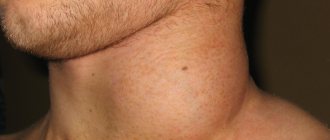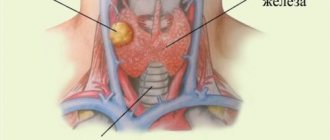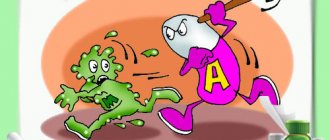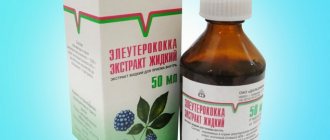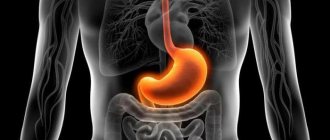Acute respiratory diseases (abbreviated as ARI) are a huge number of infections that cause damage to the respiratory tract, having much in common in pathogenesis and transmission routes, while we are talking mainly about airborne infections, although the contact route (transmission through dirty hands) also plays a role big role. The term acute respiratory infections usually refers to acute nonspecific infections, regardless of their location in the respiratory tract - from rhinitis to pneumonia. However, as a clinical diagnosis of acute respiratory infections, it requires deciphering: there must be an indication of either organ damage (otitis media, bronchitis, pharyngitis, etc.), for which the spectrum of pathogens is known, or the possible etiology of the disease (viral, bacterial acute respiratory infections). Since up to 90% of acute respiratory infections are caused by respiratory viruses and influenza viruses in the absence of signs of bacterial infection, the doctor has the right to diagnose “acute respiratory viral infection” (abbreviated ARVI) and prescribe antiviral treatment.
Young children suffer 5–8 acute respiratory infections annually if they live in a village, and in cities there are even 10–12 infections per year, and this is not the limit. Even if you don’t take your child to kindergarten, protecting him from various viruses, he will still get sick, but in elementary school. But if children are hardened and still, if possible, protected from sources of infection, fully fed and promptly treated for diseases (chronic tonsillitis, allergies), against which the development of acute respiratory infections is more likely, the number of episodes of the disease and the severity of their course can be reduced to a minimum. At the same time, it is necessary to protect sick children from an overabundance of medical manipulations - acute respiratory infections are often the reason for prescribing unjustified treatment and the most common reason for the side effects of drugs on children.
Coronavirus
It belongs to large biological molecules. Infection with the pathogen leads to acute respiratory disease and lasts for 5-7 days, ending with complete recovery. If you ignore the manifestations, then atypical pneumonia appears as complications.
The most common symptoms of this agent are:
- rhinitis;
- sore throat;
- pain when swallowing.
If these signs occur, immediately consult a doctor who will prescribe medications. In addition to them, the child will be helped by such folk remedies as:
- herbal teas from cranberries, raspberries, linden, rosehip fruits and leaves;
- honey;
- onion;
- garlic;
- ginger root.
If your child feels unwell, lethargic and drowsy, do not perform home diagnostics and treatment using “grandmother’s” methods. Be sure to get examined by specialists.
What cold remedies are best for children?
How to treat ARVI in a child? An acute respiratory viral infection requires careful attention; it should not be left to chance, hoping that the cold will go away on its own. The causative agents of the disease, viruses, are transmitted by contact and airborne droplets, penetrate the mucous membranes of the mouth and nose, after which the virus descends into the respiratory tract, where it begins its destructive effect.
Viral infections include:
- parainfluenza;
- enterovirus;
- flu;
- adenovirus;
- rhinovirus;
- reovirus;
- coronavirus;
- respiratory sensitis infection.
To treat colds in children, you can use drugs divided into two large groups:
- Etiological, destroying the virus, preventing its reproduction and spread among the cells of the body.
- Symptomatic, eliminating or reducing the severity of the most common catarrhal symptoms (against fever, cough, runny nose, headache, diarrhea, tissue swelling).
The first group promotes a person’s rapid recovery, and the second group improves a person’s condition during illness.
In order for your child’s treatment to be effective, you need to follow these recommendations:
- keep the child on bed rest, ensuring minimal physical activity;
- frequently ventilate the room where the patient is located, turn on the humidifier so that the humidity level is not lower than 70%;
- do not force the child to eat if he refuses to eat. 2-3 days after the onset of the disease, the baby will want to eat on his own, he can be offered chicken broth and fresh fruit;
- Often offer the child warm drinks, in the form of compote, fruit drinks, tea and water. This is necessary to quickly remove toxins from the body.
Adenovirus
It provokes the occurrence of classic catarrhal-respiratory syndrome. Most common among children and primary schoolchildren. In addition to the main symptoms, there are also atypical manifestations:
- redness of the mucous membrane of the eye;
- swelling of the eyelids;
- feeling of “sand in the eyes”.
The course of the disease can be mild or severe. In the first case, the syndrome persists for 10 days, in the second – 14 days. With timely treatment, it rarely causes complications, but is dangerous for newborns and people suffering from immunodeficiency.
Preparations for symptomatic treatment and first aid
What to give a child for ARVI should be decided by the doctor, who should be invited immediately after the first signs of a viral infection appear in the baby.
All drugs must be purchased in children's dosage forms, and given to the child strictly according to the schedule and dosage recommended by the doctor.
From temperature
Temperature is a normal reaction of the body to an invading virus. Under its influence, the process of producing interferons is launched; these substances do not allow viruses to penetrate the cells of the human body and multiply there.
Thermometer readings up to 38 degrees should not cause concern to parents; they can not be reduced by medications (provided that the child does not have diseases for which high body temperature is contraindicated).
To combat higher numbers, you can use syrups or suppositories for ARVI in children. These drugs may contain ibuprofen or paracetamol as active ingredients, as well as their combination (Panadol, Nurofen, Cefekon). These drugs are considered safe for the baby; they gently reduce elevated body temperature, simultaneously relieving him of headaches, as well as ear pain, which often accompanies otitis media.
Children should not be given aspirin to lower their temperature. This medicine can cause serious side effects such as internal bleeding.
The instructions included with the drugs indicate specific dosage numbers that must be followed. You should not give the same drug throughout the day; it is better to alternate the active ingredients, observing a time interval between their doses of 4 to 6 hours.
For a runny nose
For a runny nose and cough caused by mucus flowing down the back wall of the larynx, special syrups and lozenges can help.
To make the treatment process faster, you need to:
- rinse the nasal cavity with saline solutions, for example, containing sea water (Aqualor, Salin, Aquamaris), use self-prepared formulations;
- before going to bed, to facilitate nasal breathing, you can use drops that have the ability to narrow the dilated vessels of the nose (Nazivin, Otrivin, Snoop);
- To fight colds, when the snot changes its hue to yellow or green, you can use Pinosol, Sialor. These drugs have the ability to fight bacteria, which allows you to quickly get rid of unpleasant nasal flow. According to the doctor's recommendation, the child can be instilled with Isofra drops.
Important! Drops used to constrict blood vessels cannot be used for a long time. Already after 5-6 days, addiction to the active substance may develop, which is fraught with serious complications.
Against cough
Cough is a frequent accompaniment of acute respiratory infections; as a rule, in the first days it is dry, which causes serious discomfort to the child, causing discomfort in the larynx.
To prevent this symptom from bothering the child, you need to make the cough productive, to ensure that it passes into the wet stage, with sputum production. For this purpose, you can use syrups with a plant base (Gerbion, Doctor Mom), Mucaltin tablets, inhalations with Bromhexine, saline or alkaline mineral water.
Pulmicort for inhalation or offer drugs that suppress the cough reflex (Sinekod) to a child without a doctor’s prescription.
Helping your child with a sore throat
Unpleasant sensations in the throat often develop in children when a viral infection occurs. To alleviate the condition of the baby, you can use the following methods of therapy:
- spray Miramistin for ARVI in children: the drug destroys infections well;
- rinse your mouth with decoctions of chamomile, sage, and calendula. You can use a mixture of soda and salt for this purpose;
- irrigate the throat with Hexoral, Ingalipt, Tantum Verde sprays;
- if the child’s age allows, dissolve Faringosept.
For vomiting and diarrhea from intoxication
In some cases, an enterovirus may be associated with a respiratory infection, causing nausea and digestive disorders. In addition, such symptoms accompany severe intoxication of the body.
To prevent dehydration, it is very important to follow these rules:
- Be sure to give your child enough water;
- give him rehydration solutions (Humana Electrolyte);
- You can offer Polysorb for children with ARVI, Smecta helps a lot;
- sometimes enterosorbents (Enterosgel) are required;
- if there are signs of a bacterial infection, the doctor may prescribe Enterofuril, which destroys microbes in the intestines.
Children should not be offered medications containing loperamide to prevent diarrhea.
For conjunctivitis
Among the first symptoms of a viral infection, redness of the eyes, active flow of tears from them, and the appearance of purulent discharge often occur. These signs cannot be ignored; they indicate the development of viral conjunctivitis.
Only a doctor can prescribe proper treatment, because the disease can be of different nature: allergic, bacterial or viral. Accordingly, the treatment will be indicated differently.
For first aid for a child, you can use Tobrex drops or Ophthalmoferon ointment.
Antiviral drugs
Antiviral drugs, actively advertised and often prescribed to children, most often do not give a visible effect and are a simple waste of money.
Anti-flu syrup, chosen independently, may not only not help, but also harm the baby. Especially if my mother bought it without first consulting a doctor.
Most drugs prescribed to fight viruses have the ability to increase the amount of interferons in the human body (suppositories Viferon, Kipferon, Grippferon drops). Their thoughtless use can greatly harm human health by disrupting the process of producing one’s own protective antibodies.
Among antiviral medications, homeopathic remedies (Ocillococcinum, Aflubin) are especially often prescribed to children; most often, they do not harm the child’s body, but they do not bring any benefit either.
Efficiency proven by scientific research is found only in such serious drugs as Tamiflu and Oseltamivir. However, their independent administration is not allowed, especially when the child has ARVI. These antiviral, anti-influenza drugs for children can only be recommended by a doctor, accurately recommending the dosage.
Children's syrup for ARVI and influenza can only be prescribed by a specialist with the appropriate qualifications.
Flu
The virus has several strains, the most common types are A, B, C. Signs of infection appear in the baby on the second day. With correct diagnosis, it is possible to adjust treatment depending on the type of harmful agent.
Infection is accompanied by the following manifestations:
- hyperthermia over 38 degrees;
- gagging, nausea;
- swelling of the eyelids;
- runny nose;
- aches all over the body.
To avoid complications, it is necessary to select a method of therapy together with a medical specialist.
Pathogenetic methods of treating acute respiratory infections
These methods include interventions used for acute laryngitis and obstructive forms of bronchitis.
Acute laryngitis and croup are conditions that require assessment of the degree of stenosis, as judged by the intensity of inspiratory retractions of the chest, pulse and respiration rates. Grade 3 croup requires emergency intubation, grade 1 and 2 croup is treated conservatively. Antibiotics are not administered to a patient with laryngitis; according to global consensus, intramuscular dexamethasone 0.6 mg/kg is most effective, which stops the progression of stenosis. Further treatment is continued with inhaled steroids (dosed or through a nebulizer - Pulmicort) in combination with antispasmodics (salbutamol, Berotec, Berodual in inhalations).
Laryngeal stenosis can be caused by epiglottitis (H. influenzae type b plays a major role in its etiology) - it is characterized by high temperature and increased stenosis in the supine position; Prescribing an antibiotic (cefuroxime, ceftriaxone) in this case is mandatory.
Difficulty breathing and expiratory shortness of breath are often observed with bronchiolitis and obstructive bronchitis, as well as with an asthma attack against the background of ARVI. Since bacterial infection is rare in such cases, antibiotics are not justified. Treatment - inhaled sympathomimetics (in young children it is better in combination with ipratropium bromide) and the use of steroids in refractory cases - makes it possible to cope with obstruction in 1-3 days.
Prevention
Prevention of influenza and acute respiratory viral infections in children is simple, but preventive measures should be observed constantly. These include:
- Daily walks in the fresh air lasting from 2 hours;
- Active lifestyle. This means that the child should move as much as possible, play outdoor games, kick a ball on the street. He should be allowed to spend as little time as possible watching cartoons;
- Maintaining a daily routine. Adequate sleep is one of the important components of the prevention of ARVI in young children;
- Maintaining cleanliness in living rooms;
- Proper nutrition. The baby's diet should contain more lactic acid products, fruits, vegetables, cereals, soups and as few sweets as possible.
With frequent recurrence of acute respiratory infections, the child needs additional vitamin complexes and immunomodulators, the latter should be prescribed by a doctor. Many parents note an increase in their child’s immunity after a course of using a therapeutic and prophylactic product based on natural ingredients, Doromarin.
DoroMarine is completely safe for children, it does not cause adverse reactions or allergies, and can be combined with drug therapy. Taking the vitamin complex is allowed from the age of three months. The safety of Doromarin is confirmed by its completely natural composition:
- Far Eastern kelp angustata contains a number of biologically active substances, vitamins, microelements;
- Extract from sea trepang. Its properties are similar to the effects of fish oil on the body;
- Marine calcium. Helps strengthen bone tissue, improves the formation of dental tissue;
- Fruit juice. Contains vitamins and gives the product a pleasant taste.
Doromarin helps to cope with anemia in a child, relieves constipation; changes for the better when taken are noticed in children with cerebral palsy, allergic reactions, and chronic respiratory diseases. It is advisable to start taking DoroMarine before the child starts attending school or kindergarten; such a measure to prevent influenza and ARVI will allow the child not to get sick even during the cold season.
If you have ARVI, you should not bathe a child and 5 more myths about the treatment of ARVI
ARVI, like other diseases, is associated with many speculations, almost superstitions. Let's go through the main ones and become free from stupid beliefs.
- If you have ARVI, you can’t go for a walk. Of course, if the temperature is high and the child does not tolerate it well, has a headache, watery eyes or are too sensitive to light, then there is no need to go for a walk, as it is physically difficult.
But if the child is alert and the only complaints are snot and cough, then a walk will be beneficial. Cool, moist air will help mucous membranes better fight viruses, reduce irritation of the nasopharynx and the desire to cough. Movement will improve the removal of sputum and mucus from the sinuses, reduce swelling and generally remove congestion, which usually causes an additional infection.
- If you have ARVI, you need to feed your child properly. Reluctance to eat when sick is absolutely normal, as the body tries to devote all its strength to a quick recovery, and food, especially protein foods, including dairy, distracts the attention of the immune system. All you need in the first days of ARVI is to drink as much warm water as possible, and eat as you wish.
If the child wants, offer some whole grain cereals or whole grain baked goods, cooked vegetables, baked apples or pears with honey. It's enough. Your child will not die of hunger, do not prevent him from recovering faster.
- If you have ARVI, you should not bathe or wash yourself. So who came up with this? During illness, the child sweats a lot, metabolic products come out through the skin. Of course, they need to be washed off, this is a natural detoxification. Warm water eases muscle spasms, relieves tension in the head muscles, and helps to blow your nose and cough better. And if you take a bath with sea salt (at least a kilogram per bath), the swelling of the nose will decrease, and you will be able to sleep peacefully at night.
Again, act wisely: if the temperature is high, the child is lethargic, you should not offer him a bath, otherwise he will overheat even more and become overtired. It’s better to just wash or dry yourself with a damp, warm towel.
The biggest danger is not drying your head or body and getting into a draft. This is what you need to keep an eye on. And of course, there is no need to go for a walk after swimming. Even in a healthy state, after washing your hair, it is safe to go outside no earlier than 3-5 hours later.
- In case of ARVI, the child must be wrapped warmly. There can be no clear rules here - watch your child, as he feels most comfortable. The baby himself will tell you what is best by his behavior. When there is a chill, you need to warm them up and let them sweat; when it is hot, there is a danger of overwrapping and overheating the child, which will worsen his condition, so do not impose warm clothes and do not cover him with a blanket for the tenth time.
- If you have an acute respiratory viral infection, you need to lie in bed all day, watch cartoons and eat sweets for comfort. Lying for a long time increases congestion in the nasopharynx and bronchi, makes expectoration difficult, and slows down the recovery period. In order for a child to cough well, either a vibration massage or active movement is required. Don't restrict your child if he wants to run, and don't let him watch cartoons for hours.
Trying to console a sick person with sweets is an unsuccessful tactic. This creates a subconscious pleasure from illness and a desire to get sick more often. In addition, an excess of sweets creates an environment for the rapid growth of bacteria, which is completely undesirable.
- Refusal to attend kindergarten or school for 2–3 weeks due to “contagiousness.” On average, from the moment of acute onset of ARVI, a child is contagious for 4–5 days. If the temperature is normal, a residual cough or snot persists, you can visit public institutions, and we have already discussed the options for infectious snot before.
How to treat ARVI?
Mild and moderate course of ARVI disease does not require hospital treatment. However, for home therapy it is necessary to organize the implementation of the rules:
- Limitation in communication;
- Provide separate bed linen, dishes, towels;
- Daily wet cleaning of the patient’s room;
- Ventilate as often as possible;
- Control air humidity (must be at least 40%).
- Drug therapy for ARVI is also required. Doctors prescribe a symptomatic treatment option. It includes:
- antiviral;
- immunomodulatory Grippferon, Aflubin, Bronchomunal, Viferon, Immunal, Cycloferon, Amiksin.
The prescription list also includes medications to relieve other symptoms of the disease:
- antipyretics (Nimesil, Nurofen);
- mucolytics (Lazolvan, Erespal, Mucaltin);
- vasoconstrictor drops or nasal sprays;
- complex of vitamins.
All appointments are made by the attending physician during the appointment!
Dr. Komarovsky also talks about the treatment of ARVI.
Symptoms of acute respiratory infections
If acute respiratory infections are of bacterial origin, the symptoms will develop gradually and increase over time. What will the child complain about and what will you see during the examination:
- mild headache;
- general malaise for two to three days;
- a rise in body temperature first to 37.00C, then the fever increases;
- a cough gradually appears with yellow-green sputum;
- runny nose with thick yellow mucus;
- if the tonsils are affected, then white-gray plaques appear on them.
The gradual development of symptoms is associated with the relatively slow introduction and proliferation of bacteria. Pus - in plaque, nasal discharge and sputum - dead bacteria and leukocytes.
A runny nose is one of the symptoms of acute respiratory infections.
ARI, ARVI or cold?
In order to prescribe adequate therapy to a child when the first symptoms appear, you must first correctly identify the disease. There are significant differences between acute respiratory infections and colds: a common cold occurs due to hypothermia of the body, and the causes of acute respiratory infections are viruses and bacteria that are present in the surrounding atmosphere.
Symptoms of a cold are usually less pronounced, develop rather slowly and do not increase, while respiratory infections (especially parainfluenza) occur rapidly: 1-2 days, and sometimes several hours, may pass from the moment of infection to the moment the first signs appear.
As for acute respiratory viral infections and acute respiratory infections, in the first case the disease is caused by viruses, and in the second by bacteria, but even doctors often use these concepts as synonyms.
How to distinguish flu from colds and ARVI
In any case, making a diagnosis on your own and prescribing treatment for your child is not recommended, since in some cases (for example, with sore throat or bacterial infections), the use of antibiotics and other potent drugs is completely justified, and sometimes they are simply useless.
Causes of occurrence, why it is dangerous
According to statistics, almost 90% of all respiratory diseases are caused by viruses. During an epidemic, approximately one fifth of the population gets sick.
In acute situations, half of the people are infected, and every second resident is a virus carrier.
It is difficult to cope with this state of affairs, especially in the situation with children: they love to communicate, and in children's institutions they usually get sick in whole groups.
There are more than a hundred varieties of pathogenic viruses, including various types of influenza. All pathologies have one thing in common - the route of infection: the source of the disease is almost always a sick person.
As soon as people feel slightly unwell, weak, or have a slight cough, they can already infect others.
Children spread the infection especially quickly. Their contacts with each other and joint games do not leave the immune system any chance of resistance.
While sneezing or talking, the baby infects not only other children, but also family members and people in transport. A less common method of transmission is household (through dirty hands). Children often neglect hygiene measures and eat with unwashed hands.
Additional negative factors:
- weak immunity;
- previous illness;
- poor nutrition;
- severe shock or stress.
Circumstances have a bad effect on the baby’s condition and significantly weaken the body’s defenses. The virus penetrates the desired tissues and begins to actively multiply.
How to recognize: first signs
The manifestations of the disease are similar in children of different ages; in preschoolers and schoolchildren it is easy to recognize the course of ARVI.
Pay attention to:
- Runny nose and cough.
Itching in the nose or upper palate, a slight burning sensation are the first signs of an incipient cold. The sensations are unpleasant and become more and more intense over time. This reaction of the body acts as a defense against the invasion of pathogenic microflora. - Increased body temperature. It is important to constantly monitor the indicator: specific degrees indicate the nature of the virus and the subsequent necessary actions.
If you notice the following symptoms in your baby, visit a doctor: early initiation of therapy minimizes the likelihood of complications.
Note! ARVI in an infant is even easier to recognize: a fragile body is much more susceptible to diseases, characteristic symptoms develop literally in one day.
At the first symptoms of ARVI, infants should be shown to a specialist for further treatment; it is better to call an ambulance .
Effective medications for children with colds, ARVI and flu
Caring parents always try to stock a home or travel first aid kit with flu, acute respiratory viral infections and colds for their child. And indeed, sometimes the disease takes you by surprise - on weekends, but at night, away from home. And I want to have the most necessary medications at hand that will not harm the baby and will alleviate his condition until the doctor arrives. In this article we will look at what products should be included in a first aid kit and in what cases they should be given.
How long does ARVI last in a child?
The duration of ARVI is an exclusively individual parameter. Pediatricians cannot give a definite answer to this question. According to statistical observations, the average duration of a cold from the first appearance of its symptoms until the disappearance of clinical manifestations is 1-1.5 weeks. But this does not mean that the mother should prepare herself for such a long-term treatment. Factors determining this parameter are:
- state of immunity;
- intensity of treatment;
- form of the disease.
It is worth considering that any virus is capable of mutation. This fact determines the individual treatment algorithm for ARVI, the symptoms and treatment of which in children are described above. This phenomenon completely changes the structure of the virus - new symptoms appear, which can mislead doctors and complicate the diagnostic process. As a result, there is a need for long-term treatment, the use of new methods and drugs.
